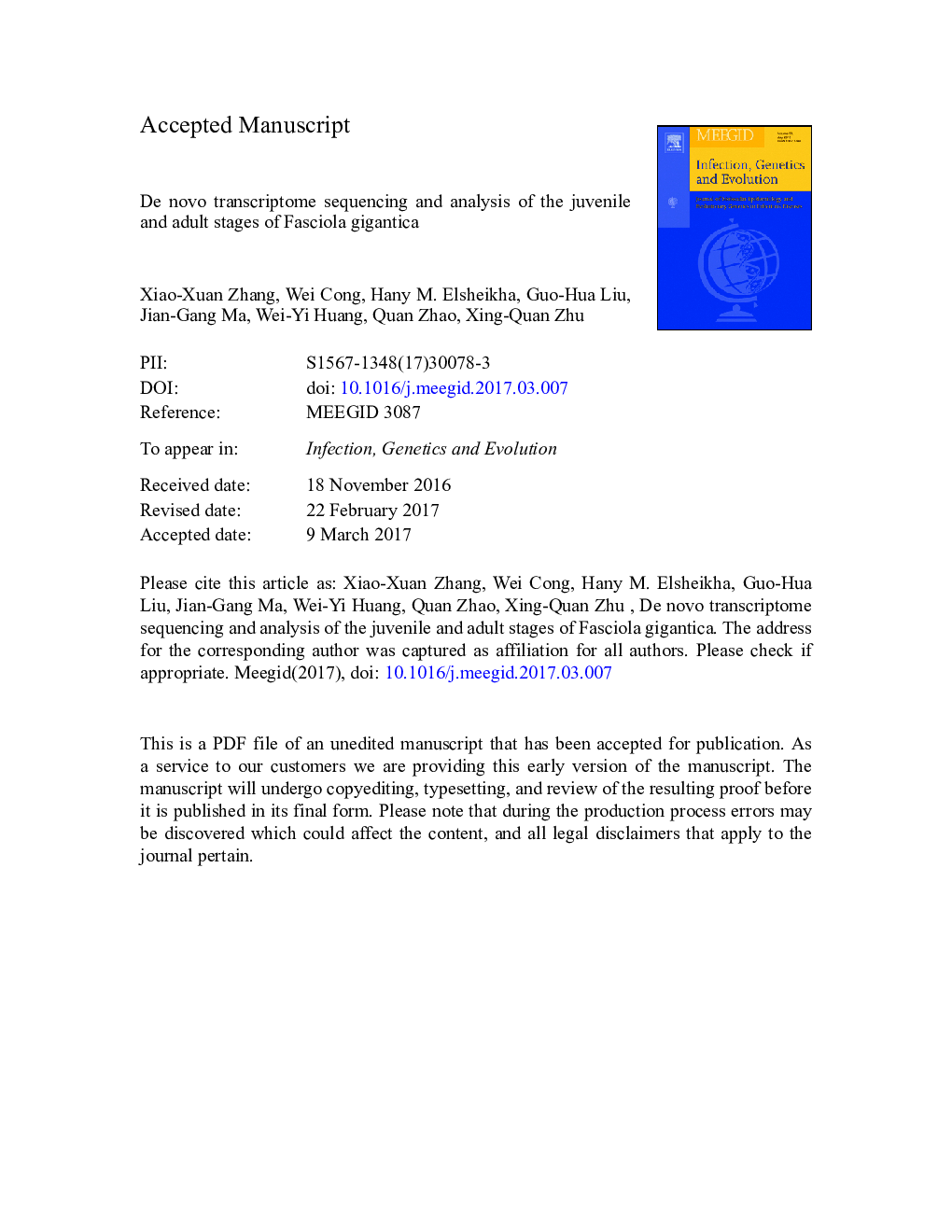| Article ID | Journal | Published Year | Pages | File Type |
|---|---|---|---|---|
| 5590423 | Infection, Genetics and Evolution | 2017 | 33 Pages |
Abstract
Fasciola gigantica is regarded as the major liver fluke causing fasciolosis in livestock in tropical countries. Despite the significant economic and public health impacts of F. gigantica there are few studies on the pathogenesis of this parasite and our understanding is further limited by the lack of genome and transcriptome information. In this study, de novo Illumina RNA sequencing (RNA-seq) was performed to obtain a comprehensive transcriptome profile of the juvenile (42 days post infection) and adult stages of F. gigantica. A total of 49,720 unigenes were produced from juvenile and adult stages of F. gigantica, with an average length of 1286 nucleotides (nt) and N50 of 2076 nt. A total of 27,862 (56.03%) unigenes were annotated by BLAST similarity searches against the NCBI non-redundant protein database. Because F. gigantica needs to feed and/or digest host tissues, some proteases (including cysteine proteases and aspartic proteases), which play a role in the degradation of host tissues (protein), have been paid more attention in the present study. A total of 6511 distinct genes were found differentially expressed between juveniles and adults, of which 3993 genes were up-regulated and 2518 genes were down-regulated in adults versus juveniles, respectively. Moreover, stage-specific differentially expressed genes were identified in juvenile (17,009) and adult (6517) F. gigantica. The significantly divergent pathways of differentially expressed genes included cAMP signaling pathway (226; 4.12%), proteoglycans in cancer (256; 4.67%) and focal adhesion (199; 3.63%). The transcription pattern also revealed two egg-laying-associated pathways: cGMP-PKG signaling pathway and TGF-β signaling pathway. This study provides the first comparative transcriptomic data concerning juvenile and adult stages of F. gigantica that will be of great value for future research efforts into understanding parasite pathogenesis and developing vaccines against this important parasite.
Keywords
SNPsNCBIKOGSSRRPKMFasciola giganticareads per kb per million readsde novo transcriptomeHost-pathogen interactionNext-generation sequencingKEGG یا Kyoto Encyclopedia of Genes and Genomes Kyoto Encyclopedia of Genes and Genomessimple sequence repeatNational Center for Biotechnology InformationGene ontologynon-redundant protein databaseSingle nucleotide polymorphismsDifferentially expressed genes
Related Topics
Life Sciences
Agricultural and Biological Sciences
Ecology, Evolution, Behavior and Systematics
Authors
Xiao-Xuan Zhang, Wei Cong, Hany M. Elsheikha, Guo-Hua Liu, Jian-Gang Ma, Wei-Yi Huang, Quan Zhao, Xing-Quan Zhu,
